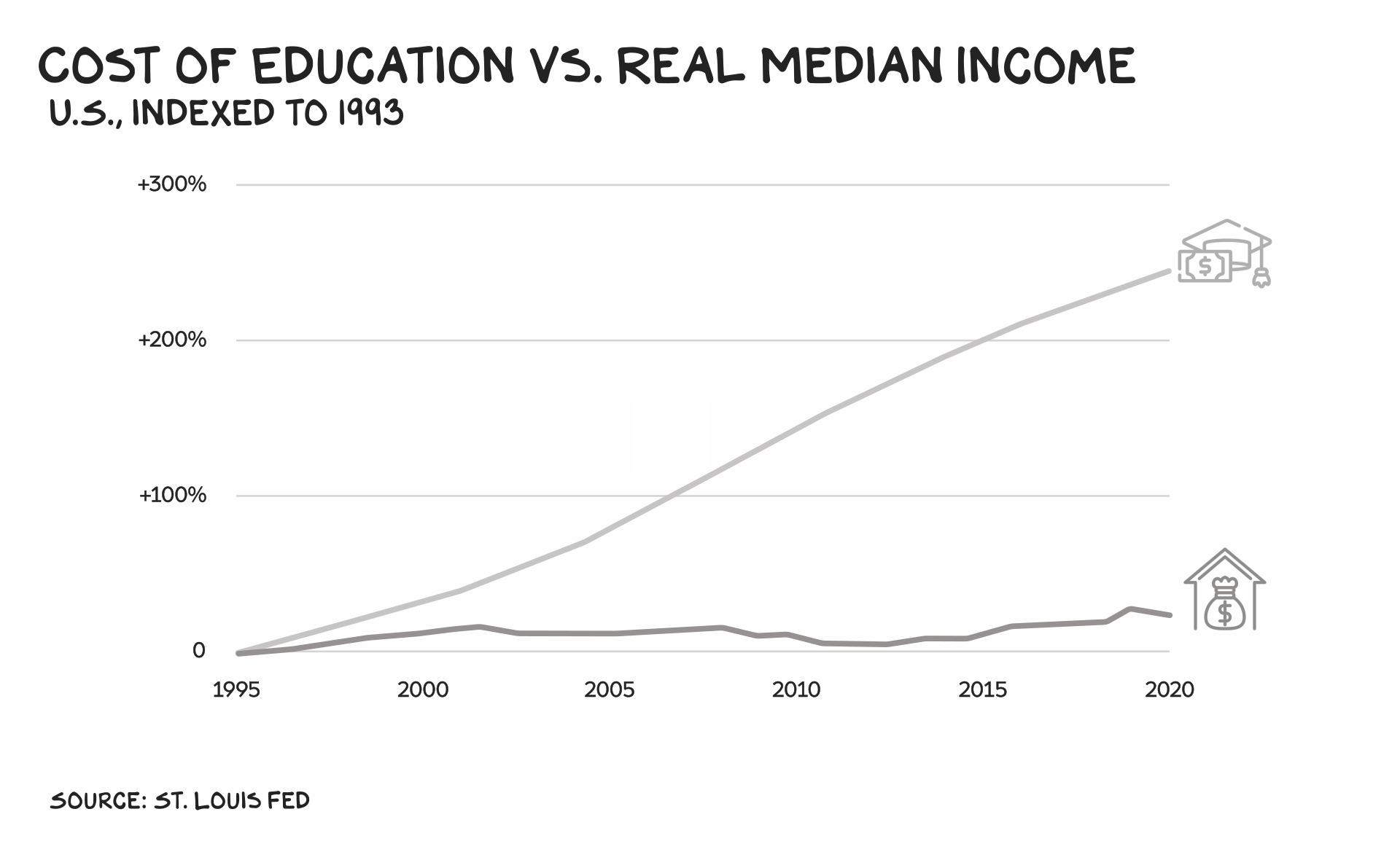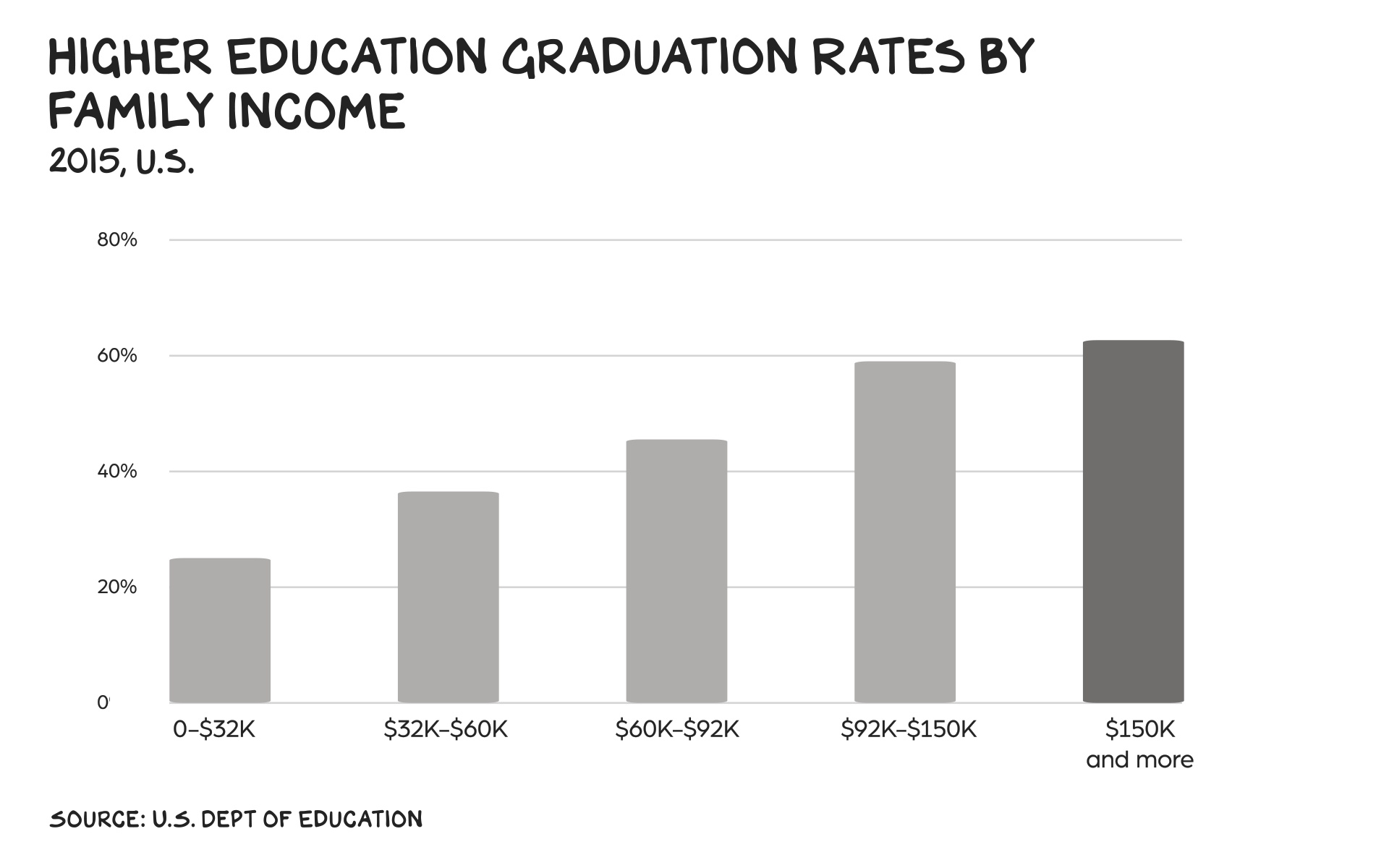Eight of the country’s elite colleges settled a lawsuit last week, agreeing to pay $118 million for colluding to match financial aid offers — price fixing. The schools deny any wrongdoing, but writing checks for $118 million does not signal innocence. The complaint lays out a strong case. In fact, nobody disputes the collusion. It was done in the light of day, through an organization called the 568 Presidents Group. To collude lawfully, the colleges were required to practice need-blind admissions … and they didn’t. These schools are forking over close to the city budget of Irvine, California, to avoid discovering what a jury of their peers might decide when presented with the facts. The lawsuit is emblematic of the rot that’s infected higher ed over the past several decades.
Rot whose stench wafted into our living rooms when America witnessed the cloddish response to campus unrest following the October 7 Hamas attack. Rot evident in the metastasizing cancer of administrative bloat at elite schools, which has dwarfed investments in actual education. Rot that has hamstrug the financial future of a generation of college graduates by burdening them with absurd debt. All because university leadership asks one question when they look out a window and see themselves: How can I increase my compensation while reducing my accountability? A: Create artificial scarcity so we can raise prices faster than inflation to fund our bloat. The good news: This can be fixed.
High-Water Mark
A decent high-water mark for American higher education is 1983 — the year Columbia became the last Ivy League school to admit women to its undergraduate program. Applications jumped 56%, and the school’s “sex-blind” admission policy resulted in a freshman class that was 45% female. By the early 1980s, 6% of Ivy League undergrads were Black; gay student organizations were recognized on campuses; and financial aid was bringing elite diplomas within reach of the broader populace. America’s top colleges morphed from finishing schools for the wealthy into a lubricant for upward mobility — put another way, American universities began to define what was great about America.
I matriculated as a freshman at UCLA the same year, 1983, and benefitted from a 76% admissions rate and $1,350 annual tuition. It’s been downhill since. What’s changed? The education hasn’t — if my 18-year-old self were to walk into a UCLA classroom today, he’d perceive only surface differences. The ROI has declined — an elite school degree can still quadruple your expected income, but your purchasing power has declined as tuition has exploded. Progress in representation has been unequal — Asian students and women are overrepresented (compared to the population at large), but Black students remain underrepresented. (Their enrollment actually declined at many schools in the late 1980s and ’90s.)
In addition, the battle over getting the “right” mix remains a misdirect. As we’ve written before, affirmative action affirms its mission by advancing kids based on income, not race. Letting in a rich Indian student who played lacrosse at Choate is not furthering diversity. Harvard’s freshman class is 51% non-white. However, 67% come from the upper fifth of families by income — the same portion as in 1983. We’re simply reshuffling the elites. In today’s America, you’re better off being born wealthy and non-white or gay than poor. This represents progress, but we need to update our thinking about who needs a hand up.
Stasis
The stasis comes at a massive cost. College is more expensive than ever and, relative to the number of qualified students, less accessible. The tsunami of capital generated by increasing tuition has not gone toward the mission. Instead, it’s funded an army of high-paid administrators, and academic programs and centers with no measurable outcomes. These arrogant attempts at social engineering are immune from scrutiny — you are clearly a racist or don’t “get it” if you question the return on DEI, ethics, leadership, ESG, or campus Rolexification (such as lazy rivers and climbing walls). The top tier of higher education is steadily regressing (again) to become the domain of the ultra-wealthy, salted with some freakishly remarkable kids to wallpaper over its transition from a lubricant to a coronation.

Support System
Some of the increase in administrative spending is warranted. Expanding access to kids from different backgrounds requires more resources. However, it does not explain the 10:1 ratio of MIT employees to faculty who (gasp) actually teach.
Between 1976 and 2018, the number of “other professionals” employed at colleges increased 452%, while full-time faculty grew just 92%. Senior administrators in diversity and inclusion positions make double or triple what teaching faculty make: Michigan pays its vice provost for equity and inclusion $431,000 a year (equivalent to $938,107 in New York City), and UVA pays its DEI VP $340,000 ($753,783 in NYC). My experience serving on the boards of organizations ranging from the New York Times Co. to the Berkeley Haas School of Business is that having a DEI position, much less a department, means you are already one of the most diverse and inclusive places on Earth. DEI on a university campus is a fire station in the ocean — expensive and redundant.

This administrative growth is parasitic, and the parasites know it. A poll of administrative staff found that 38% responded “false” to the statement, “my work makes the world a better place.” Another found that bureaucrats at universities were much less likely to believe their job benefited society than faculty members. They’re right. Administration begets more administration; it is the nature of the disease.
Surgery
How do we reverse this reversal? There are two forces to contend with: The metastasizing bureaucracy, which sees every problem as an excuse to hire more bureaucrats; and incentives. University presidents are pitted against middle-class households, as they receive psychic and economic compensation for creating artificial scarcity, the low admission rates that result in faux prestige and pricing power. This turns springtime, in households all over America, into a season of despair. The rejection of tens of thousands of good kids fuels university leadership, alumni ego, and student debt. As the lawsuit reveals, rich kids and international students who pay full freight get preference. In sum, the kids who would benefit most from college are denied it.

The emotionally charged, divisive fight over who gets in is a head fake. It’s not about who, but how many. Outside of the top 10% of universities there is no need for DEI, because most schools have more supply than demand. As I’ve argued before, we need a grand bargain. The federal government should offer the largest 500 public universities (approximately the top third) an average of $1 billion per school (adjusted by size) over 10 years.
The Biden administration allocated just about that sum, $500 billion, for student debt relief before the Supreme Court blocked it. Despite the White House’s good intentions, I do not believe you can ask the two-thirds of Americans who didn’t go to college to bail out the third who did. In addition, loan bailouts are primitive chemotherapy — they shrink the tumor but make the cancer worse, as they also bail out universities who have less pressure to address the underlying disease: cost.
In exchange for this $1 billion, over a decade, schools must:
- Reduce tuition by 2% a year;
- expand enrollments 6% a year via investments in technology and infrastructure; and
- increase vocational/certificate programs to 20% of degrees granted.
The net result, in 10 years, would be a doubling of freshman seats and a halving of cost (inflation adjusted). The investment would offer greater access — and a step-change in opportunity for kids who do not have the money, skill, or desire to pursue a traditional four-year degree. Nearly 50% of Germans receive some sort of vocational certification; in the U.S. it’s 5%. Pro tip: Forgive yourself and your kid, and reject the shame, if your son/daughter does not get a four-year liberal arts degree.
Note: Spare me the bullshit about an erosion in brand equity if our best universities broaden admissions standards. As I said, when I attended UCLA it had a 76% admissions rate, and the brand was outstanding. Scarcity is a concern for a luxury brand, not a school. Rejectionist Nimbyism is only continuing the transfer of wealth from the young/poor to the incumbent old/rich. If we can scale our most valuable firms 30% per year, then we can expand enrollments at our great public universities 6% per year. The system is ready. Increasing the amount of remote learning and utilizing campuses during non-peak periods (summers, nights, weekends) could double capacity. We can continue to produce poets and philosophers, but also nurses, plumbers, and cybersecurity technicians.
Reckoning
A reckoning is inevitable. Demographics are destiny. And destiny is coming for higher ed. The declining birth rates in the aughts mean there will be fewer undergrads starting in 2025. And the appeal of college to this dwindling cohort is fading. The most bloated industry in America is about to face a perfect storm: There are fewer customers, and the ones remaining are losing interest in the product.

This problem won’t affect elite institutions, as they receive 10 to 20 times more applications than they have freshman seats. Harvard sitting on a $52 billion endowment while limiting freshman seats to 1,500 defines what it is to be a for-profit firm. Any university that doesn’t increase the size of its freshman class faster than population growth should lose its tax-free status on the return from its endowment. At some of these colleges, the endowments have surpassed the GDP of a Central American nation. We (faculty and administrators) are public servants, not fucking Birkin bags.
Most
Why do we have a nation? Why fund a government and institutions? At the core, I believe, is the desire for our children to have access to a better life than we had. Isn’t that the whole shooting match? And we’re failing. Despite historic prosperity over the past several decades, we’ve registered less progress. We have produced the most anxious, depressed generation of young adults in our history. They must navigate algorithms and platforms that assault their self-esteem only to then face the rejection and debt higher ed levies on them.
America’s optimism, in this instance, is our weakness. We all believe our kid is the remarkable one. Well, I can prove that 99% of our kids are not in the top 1%. No institution or admissions director can predict greatness in a 17-year-old, nor should they. Our mission should be to offer as many decent/good 17-year-olds as we can a shot at greatness.
I will be accused of catastrophizing. And admittedly, despite all the challenges, most of our kids will be fine. Most.
Life is so rich,
![]()
P.S. Please add to the comments: your school; year of graduation; tuition; and what you received in exchange. I’ll go first.
P.P.S. Section’s AI Crash Course (Feb. 12-23) closes enrollment next week. Enroll here.



